In the Race to Lower Global Emissions, the Middle East Is Certainly Not Helping
Some of the countries facing the biggest threat from the climate crisis seem all too intent on making it far worse.
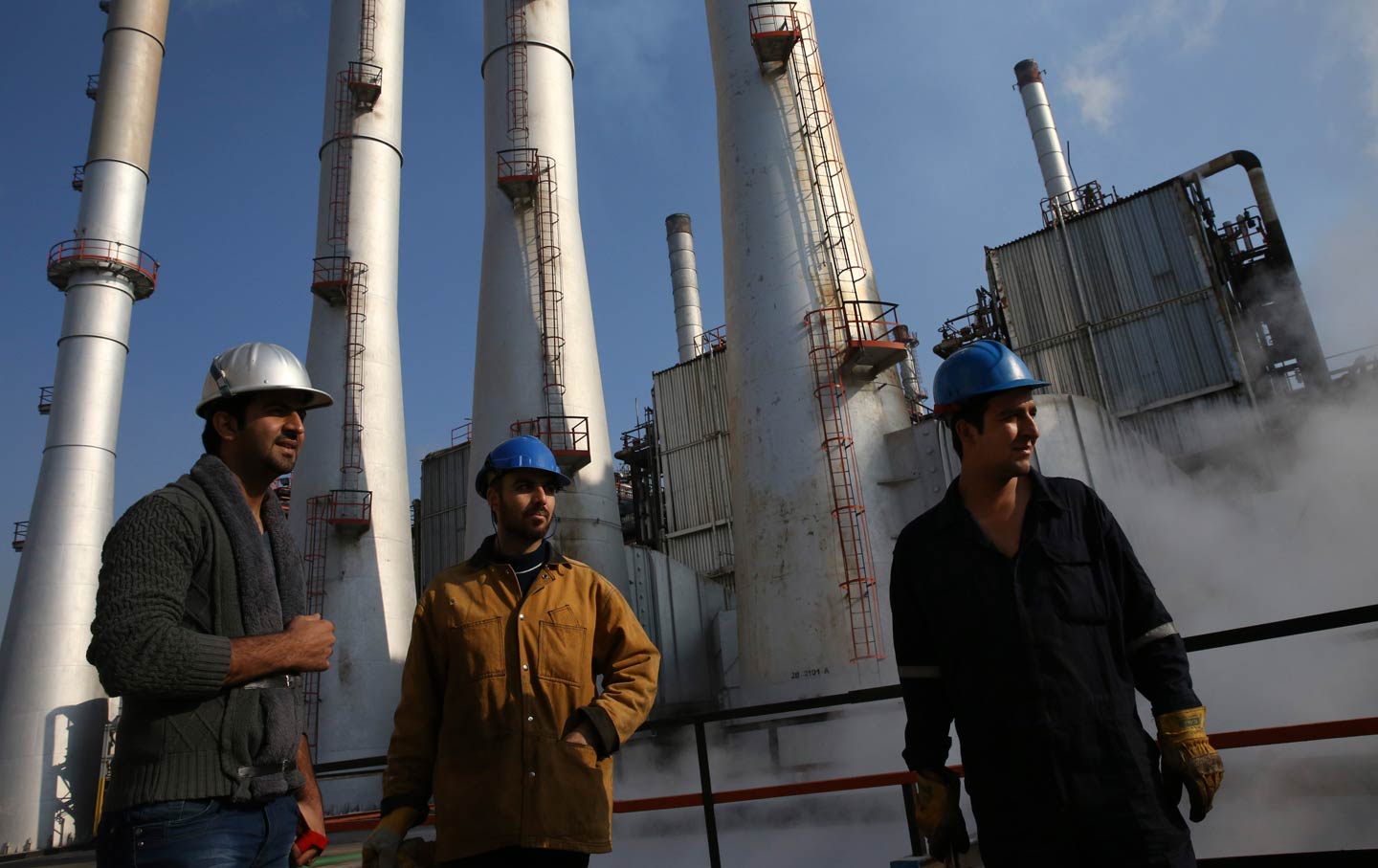
Oil workers gather at an oil refinery south of Tehran in Iran.
(Vahid Salemi, File / AP Photo)This article originally appeared at TomDispatch.com. To stay on top of important articles like these, sign up to receive the latest updates from TomDispatch.com.
Last September witnessed what used to be a truly rare weather phenomenon: a Mediterranean hurricane, or “medicane.” Once upon a time, the Mediterranean Sea simply didn’t get hot enough to produce hurricanes more than every few hundred (yes, few hundred!) years. In this case, however, Storm Daniel assaulted Libya with a biblical-style deluge for four straight days. It was enough to overwhelm the al-Bilad and Abu Mansour dams near the city of Derna, built in the 1970s to old cool-earth specifications. The resulting flood destroyed nearly 1,000 buildings, washing thousands of people out to sea, and displaced tens of thousands more.
Saliha Abu Bakr, an attorney, told a harrowing tale of how the waters kept rising in her apartment building before almost reaching the roof and quite literally washing many of its residents away. She clung to a piece of wooden furniture for three hours in the water. “I can swim,” she told a reporter afterward, “but when I tried to save my family, I couldn’t do a thing.” Human-caused climate change, provoked by the way we spew 37 billion metric tons of dangerous carbon dioxide gas into our atmosphere every year, made the Libyan disaster 50 times more likely than it once might have been. And worse yet, for the Middle East, as well as the rest of the world, that nightmare is undoubtedly only the beginning of serial disasters to come (and come and come and come) that will undoubtedly render millions of people homeless or worse.
Failing Grades
In the race to keep this planet from heating up more than 2.7° Fahrenheit (1.5° Centigrade) above the preindustrial average, the whole world is already getting abominable grades. Beyond that benchmark, scientists fear, the planet’s whole climate system could fall into chaos, severely challenging civilization itself. The Climate Change Performance Index (CCPI), which monitors the implementation of the Paris climate accords, presented its alarming conclusions in a late March report. The CCPI crew was so disheartened by its findings—no country is even close to meeting the goals set in that treaty – that it left the top three slots in its ranking system completely empty.
For the most part, the countries of the Middle East made a distinctly poor showing when it came to the greenhouse gas emissions from the burning of fossil fuels that are already heating the planet so radically. Admittedly, Morocco, with longstanding and ambitious green energy goals, came in ninth, and Egypt, which depends heavily on hydroelectric power and has some solar projects, ranked a modest 22nd. However, some Middle Eastern countries like Saudi Arabia and the United Arab Emirates hit rock bottom in the CCPI’s chart. That matters since you undoubtedly won’t be surprised to learn that the region produces perhaps 27 percent of the world’s petroleum annually and includes five of the 10 largest oil producers on the planet.
Ironically enough, the Middle East is at special risk from climate change. Scientists have found that it’s experiencing twice the rate of heating as the global average and, in the near future, they warn that it will suffer, as a recent study from the Carnegie Institute for International Peace put it, from “soaring heat waves, declining precipitation, extended droughts, more intense sandstorms and floods, and rising sea levels.” And yet some of the countries facing the biggest threat from the climate crisis seem all too intent on making it far worse.
Little Sparta
The CCPI index, issued by Germanwatch, the NewClimate Institute, and the Climate Action Network (CAN), ranks countries in their efforts to meet the goals set by the Paris Agreement according to four criteria: their emissions of greenhouse gases, their implementation of renewable energy, their consumption of fossil-fuel energy, and their government’s climate policies. The authors listed the United Arab Emirates (UAE) in 65th place, calling it “one of the lowest-performing countries.” The report then slammed the government of President Mohammed Bin Zayed, saying: “The UAE‘s per capita greenhouse gas (GHG) emissions are among the highest in the world, as is its per capita wealth, while its national climate targets are inadequate. The UAE continues to develop and finance new oil and gas fields domestically and abroad.” On the southeast coast of the Arabian Peninsula, the UAE has a population of only about a million citizens (and about eight million guest workers). It is nonetheless a geopolitical energy and greenhouse gas giant of the first order.
The Abu Dhabi National Oil Company, or ADNOC, headquartered in that country’s capital and helmed by businessman Sultan Ahmed al-Jaber (who is also the country’s minister of industry and advanced technology), has some of the more ambitious plans for expanding petroleum production in the world. ADNOC is, in fact, seeking to increase its oil production from four million to five million barrels a day by 2027, while further developing its crucial al-Nouf oil field, next to which the UAE is building an artificial island to help with its expected future expansion. To be fair, the UAE is behaving little differently from the United States, which ranked only a few spots better at 57. Last October, in fact, American oil production, which continues to be heavily government-subsidized (as does that industry in Europe), actually hit an all-time high.
The UAE is a major proponent of the dubious technique of carbon capture and storage, which has not yet been found to reduce carbon dioxide (CO2) emissions significantly or to do so safely and affordably. The magazine Oil Change International points out that the country’s carbon capture efforts at the Emirates Steel Plant probably sequester no more than 17 percent of the CO2 produced there and that the stored carbon dioxide is then injected into older, non-producing oil fields to help retrieve the last drops of petroleum they hold.
The UAE, which the Pentagon adoringly refers to as “little Sparta” for its aggressive military interventions in places like Yemen and Sudan, brazenly flouts the international scientific consensus on climate action. As ADNOC’s al-Jaber had the cheek to claim last fall: “There is no science out there, or no scenario out there, that says that the phase-out of fossil fuel is what’s going to achieve 1.5C.”
Such outrageous denialism scales almost Trumpian heights in the faux grandeur of its mendacity. At the time, al-Jaber was also, ironically enough, the chairman of the yearly UN Conference of Parties (COP) climate summit. Last November 21, he boldly posed this challenge: “Please help me, show me the roadmap for a phase-out of fossil fuel that will allow for sustainable socioeconomic development, unless you want to take the world back into caves.” (In the world he’s helping to create, of course, even the caves would sooner or later prove too hot to handle.) This year the International Energy Agency decisively answered his epic piece of trolling by reporting that the wealthier nations, particularly the European ones, actually grew their gross national products in 2023 even as they cut CO2 emissions by a stunning 4.5 percent. In other words, moving away from fossil fuels can make humanity more prosperous and safer from planetary catastrophe rather than turning us into so many beggars.
“Absolutely Not!”
What could be worse than the UAE’s unabashedly pro-fossil fuel energy policy? Well, Iran, heavily wedded to oil and gas, is, at 66, ranked one place lower than that country. Ironically, however, extensive American sanctions on Iran’s petroleum exports may, at long last, be turning that country’s ruling ayatollahs toward creating substantial wind and solar power projects.
But I’m sure you won’t be surprised to learn that dead last—with an emphasis on “dead”—comes that favorite of Donald (“drill, drill, drill“) Trump, Saudi Arabia, which, at 67, “scores very low in all four CCPI index categories: Energy Use, Climate Policy, Renewable Energy, and GHG Emissions.” Other observers have noted that, since 1990, the kingdom’s carbon dioxide emissions have increased by a compound yearly rate of roughly 4 percent and, in 2019, that relatively small country was the world’s 10th largest emitter of CO2.
Worse yet, though you wouldn’t know it from the way the leaders of both the United Arab Emirates and Saudi Arabia are acting, the Arabian Peninsula (already both arid and torrid) is anything but immune to the potential disasters produced by climate change. The year 2023 was, in fact, the third hottest on record in Saudi Arabia. (2021 took the all-time hottest mark so far.) The weather is already unbearable there in the summer. On July 18, 2023, the temperature in the kingdom’s Eastern Province, al-Ahsa, reached an almost inconceivable 122.9° F (50.5° C). If, in the future, such temperatures were to be accompanied by a humidity of 50 percent, some researchers are suggesting that they could prove fatal to humans. According to Professor Lewis Halsey of the University of Roehampton in England and his colleagues, that kind of heat can actually raise the temperature of an individual by 1.8° F. In other words, it would be as if they were running a fever and, worse yet, “people’s metabolic rates also rose by 56%, and their heart rates went up by 64%.”
While the Arabian Peninsula is relatively dry, cities on the Red Sea and the Gulf of Aden can at times be humid and muggy, which means that significant increases in temperature could sooner or later render them uninhabitable. Such rising heat even threatens one of Islam’s “five pillars.” This past year the Muslim pilgrimage to Mecca, known as the Hajj, took place in June, when temperatures sometimes reached 118° F (48° C) in western Saudi Arabia. More than 2,000 pilgrims fell victim to heat stress, a problem guaranteed to worsen radically as the planet heats further.
Despite the threat that climate change poses to the welfare of that country’s inhabitants, the government of King Salman and Crown Prince Mohammed Bin Salman is doing less than nothing to address the growing problems. As the CCPI’s authors put it, “Saudi Arabia’s per capita greenhouse gas emissions are rising steadily. Its share of renewable energy in total primary energy supply (TPES) is close to zero.” Meanwhile, at the 2022 UN climate summit conference held in Egypt, “Saudi Arabia played a notably unconstructive role in the negotiations. Its delegation included many fossil fuel lobbyists. It also tried to water down the language used in the COP’s umbrella decision.”
At the next meeting in Dubai last fall, COP28, the final document called only for “transitioning away from fossil fuels in energy systems, in a just, orderly and equitable manner, accelerating action in this critical decade, so as to achieve net zero by 2050 in keeping with the science.” Avoided was the far more relevant phrase “phase down” or “phase out” when it came to fossil fuels and even the far milder “transitioning away” was only included over the strenuous objections of Riyadh, whose energy minister, Prince Abdulaziz Bin Salman, said “absolutely not” to any such language. He added, “And I assure you not a single person—I’m talking about governments—believes in that.” His assertion was, of course, nonsense. In fact, some leaders, like those of Pacific Island nations, consider an immediate abolition of fossil fuels essential to the very survival of their countries.
Abandoning the Logic of Small Steps
Although Saudi Arabia’s leaders sometimes engage in greenwashing, including making periodic announcements about future plans to develop green energy, they have done virtually nothing in that regard, despite the Kingdom’s enormous potential for solar and wind power. Ironically, the biggest Saudi green energy achievement has been abroad, thanks to the ACWA Power firm, a public-private joint venture in the Kingdom. The Moroccan government, the only one in the Middle East to make significant strides in combatting climate change, brought in ACWA as part of a consortium to build its epochal Noor concentrated solar energy complex near the ancient city of Ouarzazate at the edge of the Sahara desert. It has set a goal of getting 52 percent of its electricity from renewables by 2030. Though critics pointed out that it missed its goal of 42 percent by 2020, government boosters responded that, by the end of 2022, 37 percent of Morocco’s electricity already came from renewables and, just in the past year, it jumped to 40 percent, with a total renewables production of 4.6 gigawatts of energy.
Popular
“swipe left below to view more authors”Swipe →Moreover, Morocco has a plethora of green energy projects in the pipeline, including 20 more hydroelectric installations, 19 wind farms, and 16 solar farms. The solar plants alone are expected to generate 13.5 gigawatts within a few years, tripling the country’s current total green energy output. Two huge wind farms, one retooled with a new generation of large turbines, have already come online in the first quarter of this year. The country’s expansion of green electricity production since it launched its visionary plans in 2009 has not only helped it make major strides toward decarbonization but contributed to the electrification of its countryside, where access to power is now universal. Just in the past two and a half decades, the government has provided 2.1 million households with electricity access. Morocco has few hydrocarbons of its own and local green energy helps the state avoid an enormous drain on its budget.
In contrast to the pernicious nonsense often spewed by Saudi and Emirati officials, the Moroccan king, Mohammed VI, is in no doubt about the severe challenges his poverty-ridden country faces. He told the UN COP28 climate conference in early December, “Just as climate change is inexorably increasing, the COPs must, from here on, emerge from the logic of ‘small steps,’ which has characterized them for too long.”
Large steps toward a Middle East (and a world) of low-carbon energy would, of course, be a big improvement. Unfortunately, on a planet they are helping to overheat in a remarkable fashion, the United Arab Emirates, Iran, and Saudi Arabia have largely taken steps—huge ones, in fact—toward ever more carbon dioxide emissions. Worse yet, they’re located in a part of the world where such retrograde policies are tantamount to playing Russian roulette with a fully loaded gun.
We cannot back down
We now confront a second Trump presidency.
There’s not a moment to lose. We must harness our fears, our grief, and yes, our anger, to resist the dangerous policies Donald Trump will unleash on our country. We rededicate ourselves to our role as journalists and writers of principle and conscience.
Today, we also steel ourselves for the fight ahead. It will demand a fearless spirit, an informed mind, wise analysis, and humane resistance. We face the enactment of Project 2025, a far-right supreme court, political authoritarianism, increasing inequality and record homelessness, a looming climate crisis, and conflicts abroad. The Nation will expose and propose, nurture investigative reporting, and stand together as a community to keep hope and possibility alive. The Nation’s work will continue—as it has in good and not-so-good times—to develop alternative ideas and visions, to deepen our mission of truth-telling and deep reporting, and to further solidarity in a nation divided.
Armed with a remarkable 160 years of bold, independent journalism, our mandate today remains the same as when abolitionists first founded The Nation—to uphold the principles of democracy and freedom, serve as a beacon through the darkest days of resistance, and to envision and struggle for a brighter future.
The day is dark, the forces arrayed are tenacious, but as the late Nation editorial board member Toni Morrison wrote “No! This is precisely the time when artists go to work. There is no time for despair, no place for self-pity, no need for silence, no room for fear. We speak, we write, we do language. That is how civilizations heal.”
I urge you to stand with The Nation and donate today.
Onwards,
Katrina vanden Heuvel
Editorial Director and Publisher, The Nation
More from The Nation
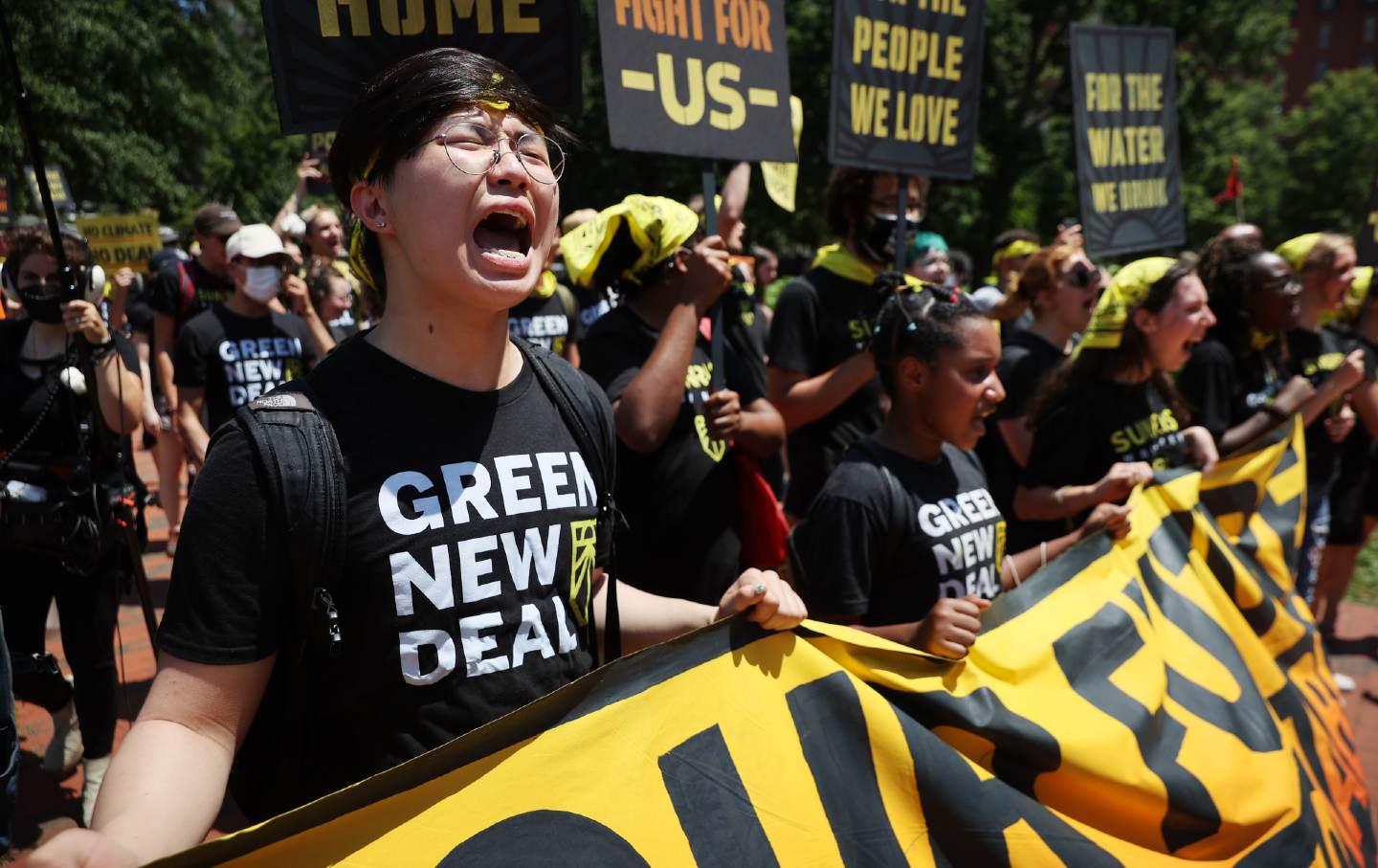
The Green New Deal—From Below The Green New Deal—From Below
It’s a base for countering Trump’s destructive policies.
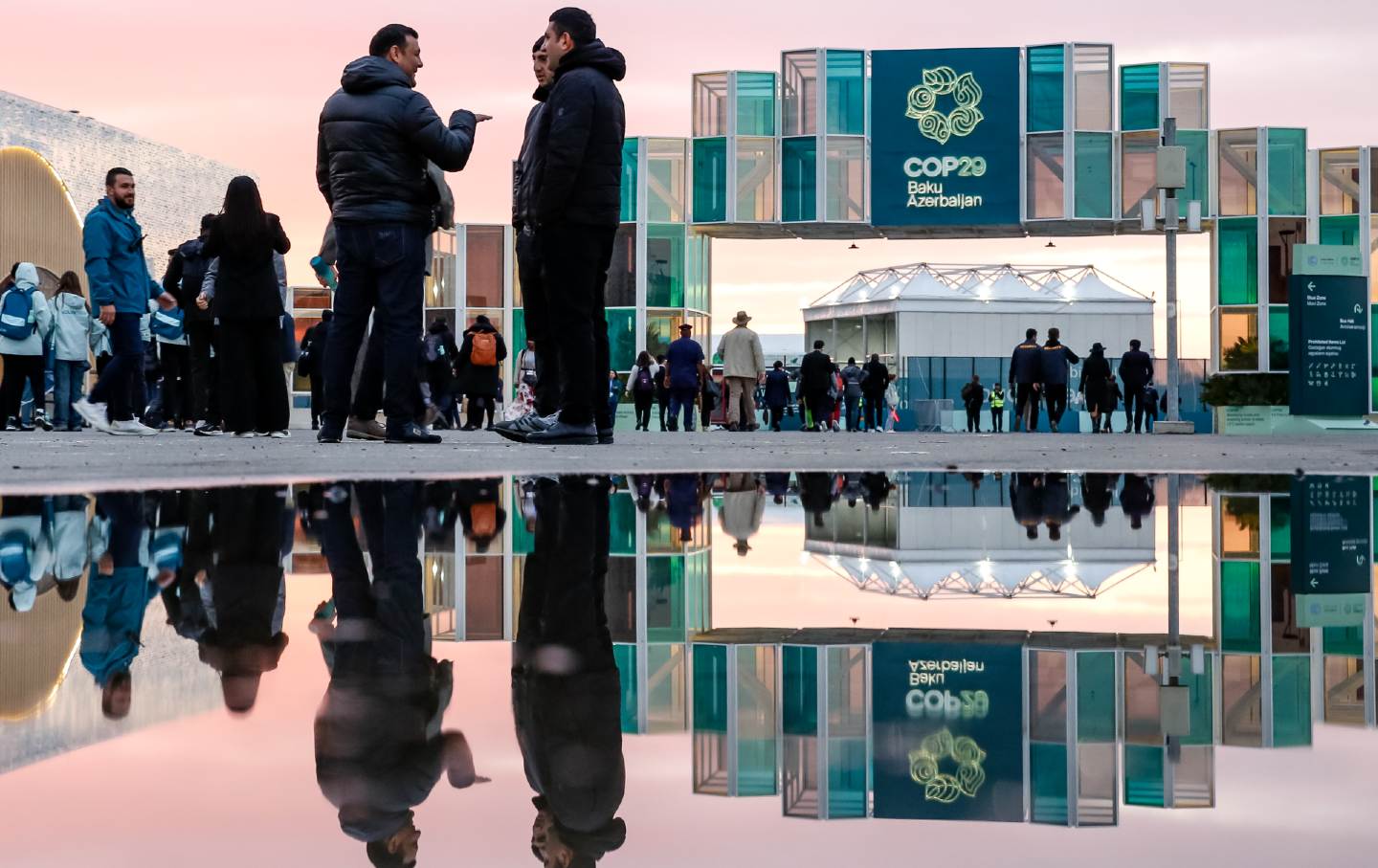
The “Dark Joke” of Having a Climate Summit in Azerbaijan The “Dark Joke” of Having a Climate Summit in Azerbaijan
COP29 in Baku reveals the contradictions of having climate negotiations in a petro-state.
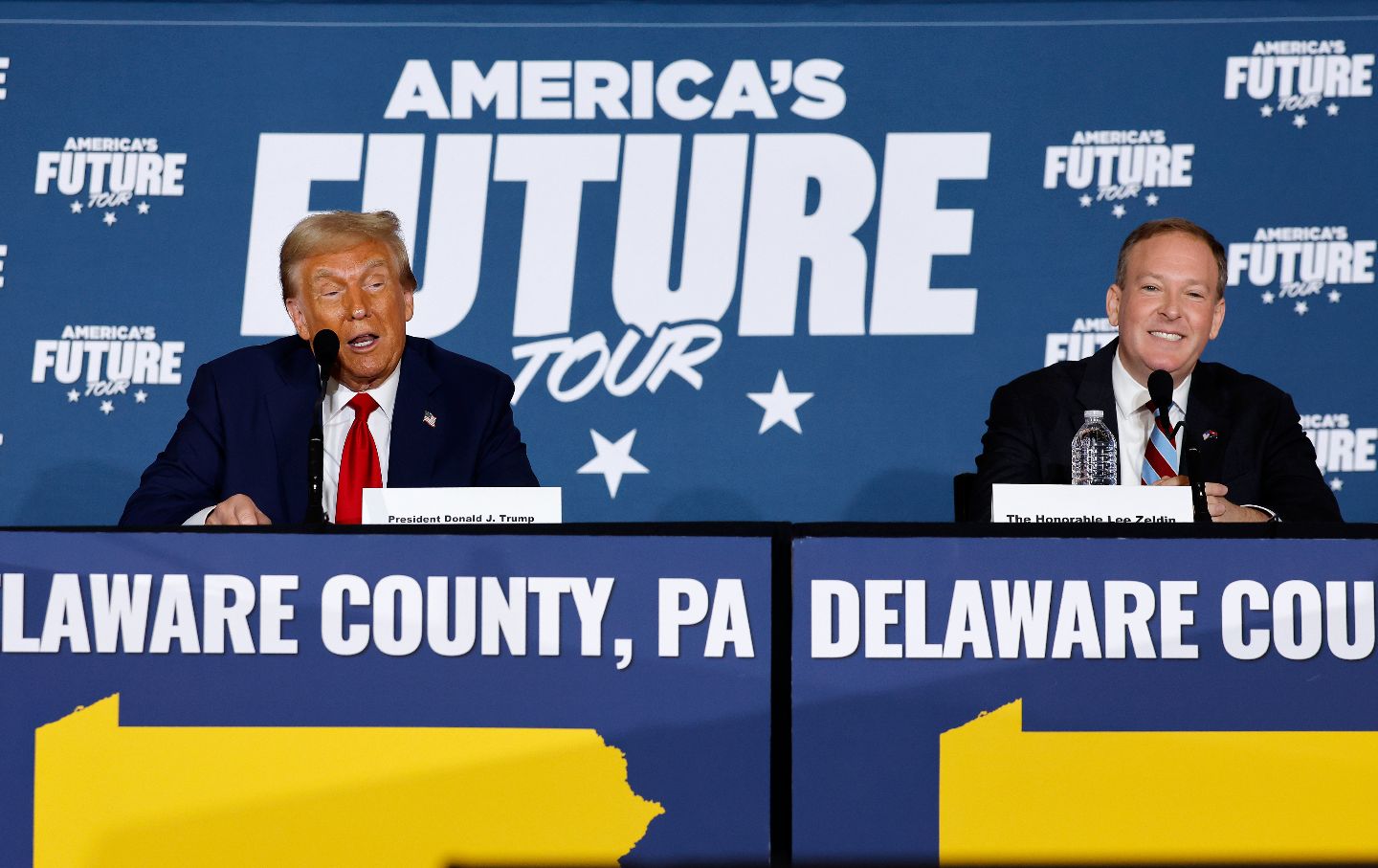
Why Trump Picked Lee Zeldin to Lead the Environmental Protection Agency Why Trump Picked Lee Zeldin to Lead the Environmental Protection Agency
With a Republican majority in Congress and Zeldin promising to “deregulate” the EPA, the new Trump administration will prioritize fossil fuel interests over environmental protecti...
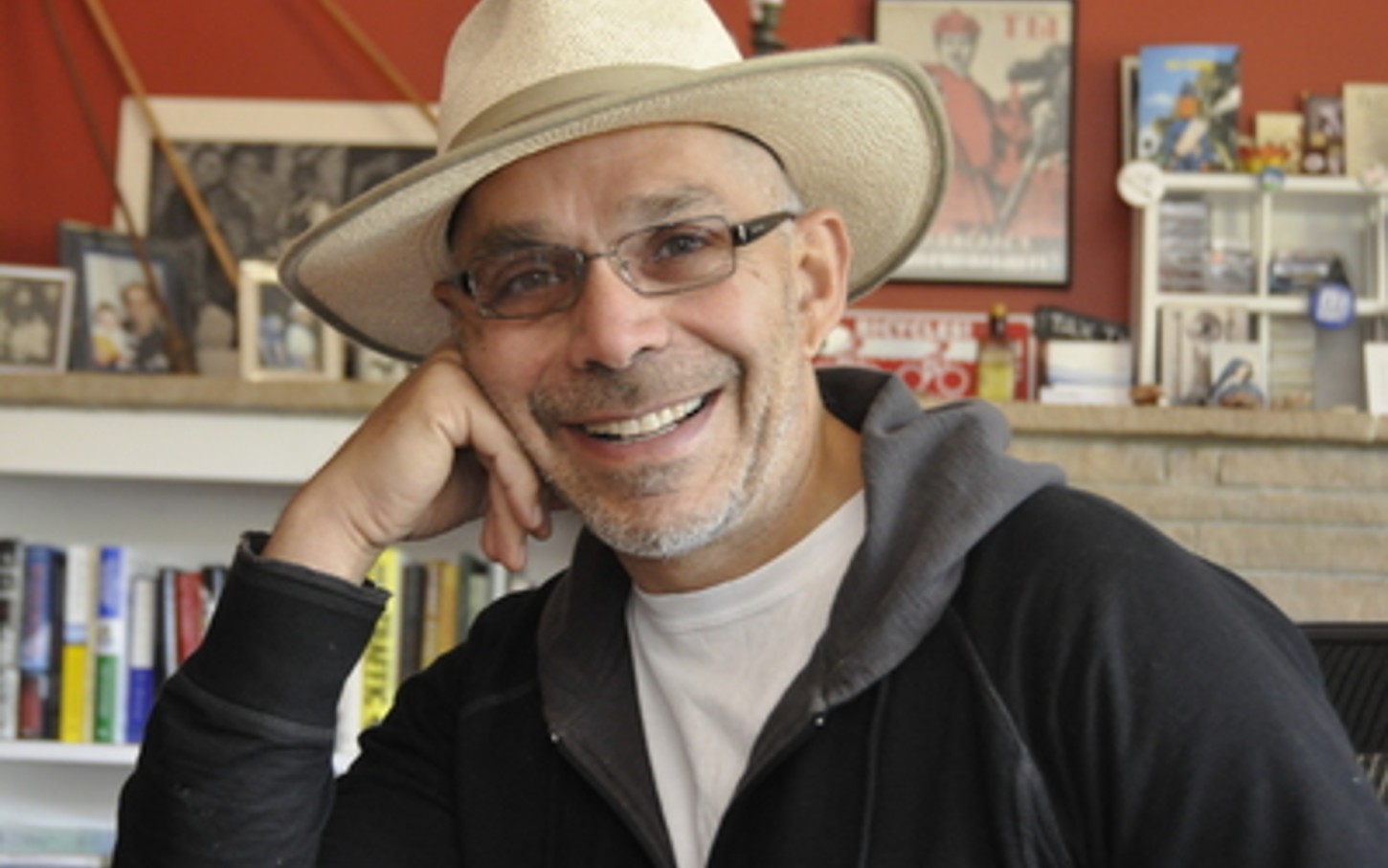
Climate Realism (Still) Means Climate Justice Climate Realism (Still) Means Climate Justice
An interview with Tom Athanasiou on where climate geopolitics goes from here, and why unlocking trillions in climate finance is an “existential necessity.”
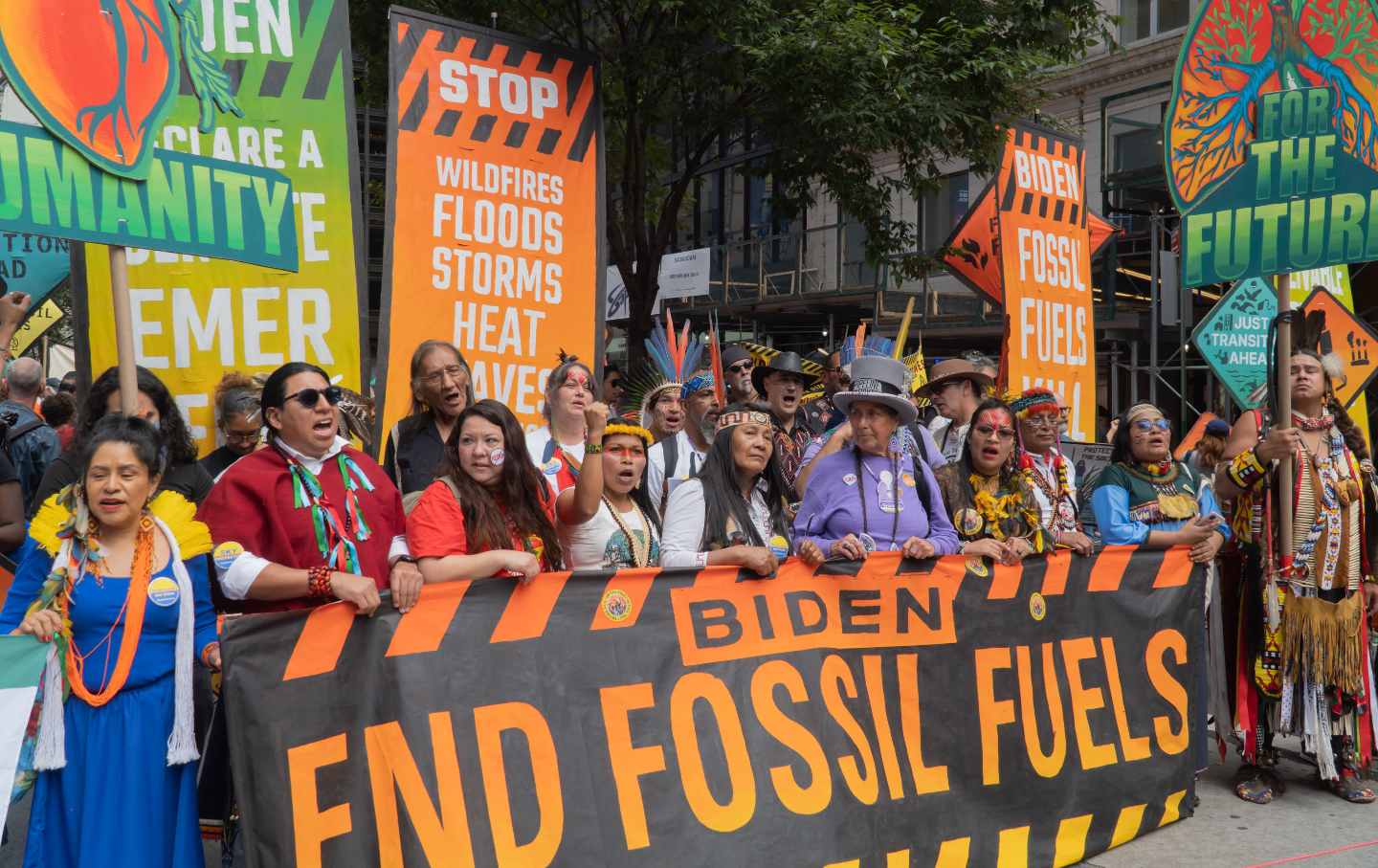
Anti-Protest Laws Won’t Silence Climate Activists Anti-Protest Laws Won’t Silence Climate Activists
Still, punitive measures against climate protest are reaching new extremes.
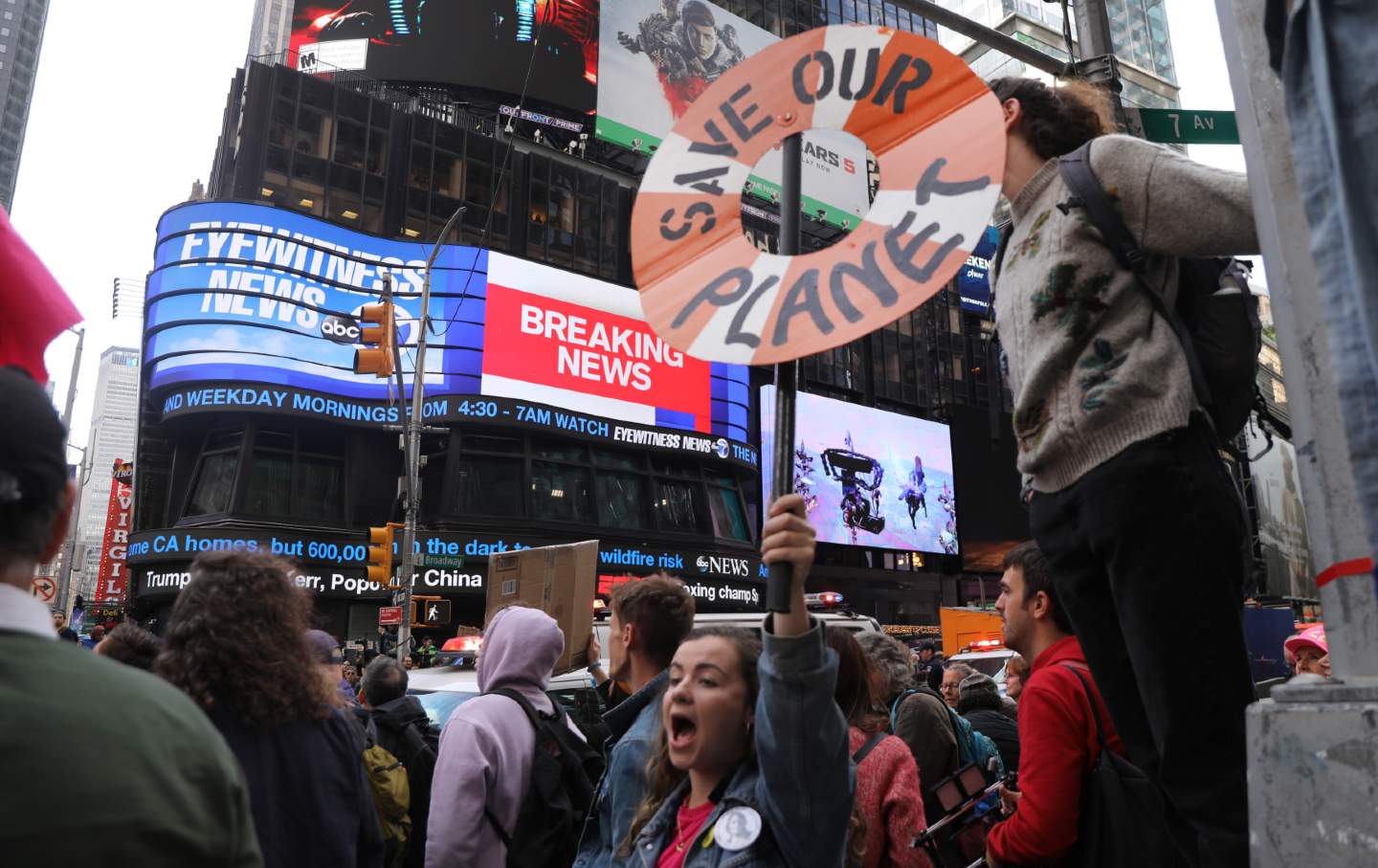
Journalists Must Rethink Our Fear of Taking Sides Journalists Must Rethink Our Fear of Taking Sides
The media often acts as if identifying threats or naming falsehoods are acts of partisanship. They are not. They are journalism.


